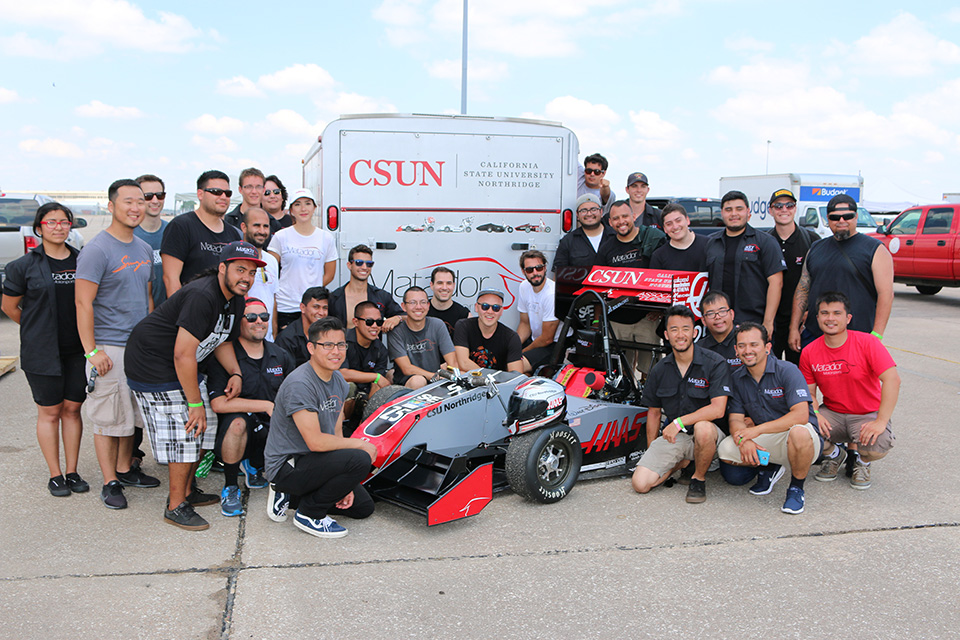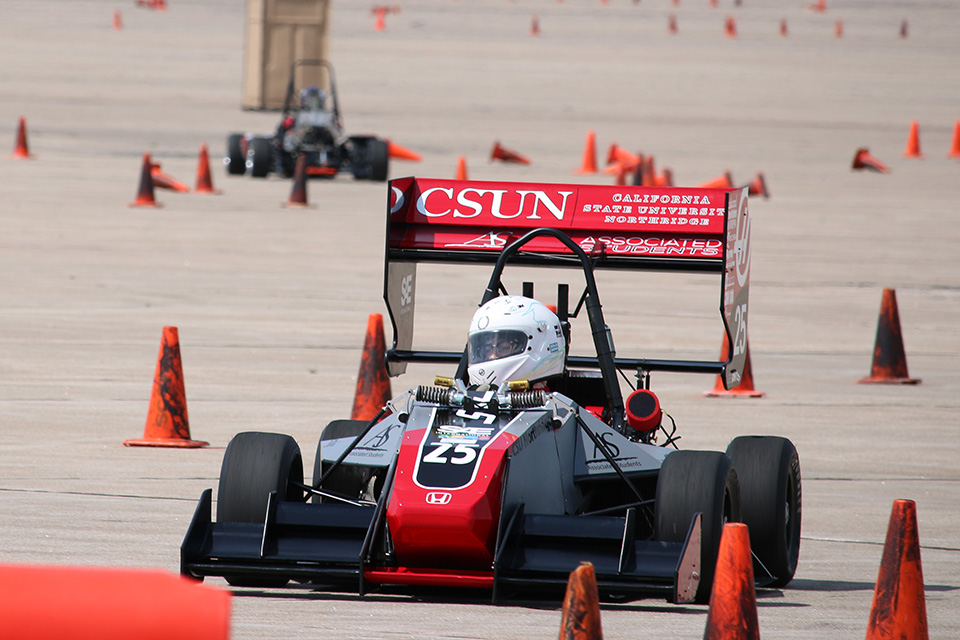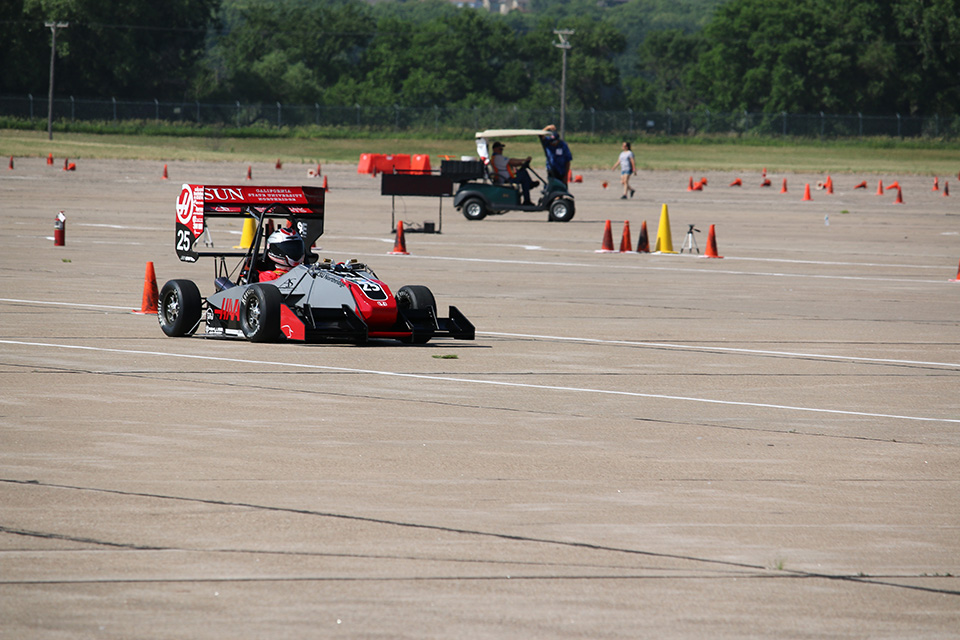Matador Motorsports Finishes 12th at Formula SAE Competition
There was plenty that could go wrong for the Matador Motorsports team as it competed in Nebraska earlier this year. In fact, the engine had never been fired up and the teams from the previous two years had ended in disqualification. But through some close calls, the team of California State University, Northridge mechanical engineering seniors not only finished the Formula Society of Automotive Engineering (SAE) event, but they placed 12th overall.
The annual event, held in June at the Lincoln Airpark in Lincoln, Neb., hosted 84 teams of students from around the world to pitch, race and demonstrate their engineering abilities with a Formula-style race car. The competition is made up of several static and dynamic events. Static events include a business pitch, vehicle cost report and design competition.
“These are exactly the kind of presentations engineers will give when they graduate and work for these companies,” said CSUN mechanical engineering professor and race car team faculty advisor, Stewart Prince.
On the first day of competition, the team ran into some technical issues. The car’s engine had never been started and it had some difficulty idling at a stop, something that had caused disqualification in previous years. The judges were also unhappy with a leg harness on the vehicle’s seat, but with some help from the UCLA team, they were able to get a passing score.
After two full days of technical evaluations to collect the four stickers required to race the car, the team rushed to pass one last evaluation the morning of the first dynamic event, which would test the car’s acceleration and skid. It was a tight timeframe, but the car was able to compete.
The dynamic events tested the vehicle’s acceleration, maneuvering and endurance. The tests were so challenging that several teams were disqualified, preventing completion of the competition. The most difficult event, the 22-kilometer endurance race, only saw 23 teams finish.
“The happiest moment was finishing endurance,” said Eddie Lopez ’16 (Mechanical Engineering), the team’s project manager. “I don’t think in that moment we cared if we placed, just that we finished endurance after two years being unable to do it. It was great.”
Each year, Prince’s two-semester senior design class creates a race car from design to finished automobile.
The class functions as a business, giving students hands-on experience in the world of automotive engineering. The 35 students were divided into different teams where they were responsible for different aspects of the vehicle, such as the suspension, motor, drive train and machining, as well as serving in positions such as a chief executive officer, chief financial officer and project manager. Twenty-five of the students were able to make it to the competition in Nebraska, where they worked on the car, presented business plans and even served as drivers.
“I’ve been working [at CSUN] 26 years, and it gets more exciting every year,” Prince said.




 experience
experience